How long is 1 light minute in terms of Earth time? And what exactly is a light-year and what does it represent? These measurements are commonly employed by astrophysicists to gauge distances within planetary systems.
What exactly is a light-year and what is its equivalent?

In the field of astronomy, the measurement of cosmic distances can be challenging when using conventional units such as meters and kilometers. To overcome this obstacle, astronomers utilize alternative units, one of which is known as the light year.
Many enthusiasts of science fiction are acquainted with this concept, as it frequently appears in movies and literature. However, not everyone comprehends the true meaning of a light year. In fact, some individuals mistakenly believe that it is similar to the conventional calculation of a year’s duration.
What is the definition of a light year?
The concept of a light year goes beyond its name, as it is not actually a measurement of time. Rather, it is a unit of distance that is commonly used in the field of astronomy. Specifically, it refers to the distance that light travels in the span of one year.
When it comes to describing distances within the solar system, the light year is often mentioned in educational materials and science fiction works. However, for more accurate calculations, astronomers rely on another unit called the parsec.

What is the method of measuring a light year?
The concept of the light year in astronomy emerged with the advancement of stellar sciences and the requirement for utilizing parameters that are comparable to the vastness of space. The term was introduced a few years following the successful determination of the distance between the Sun and the star 61 Cygni in 1838.
Originally, the light-year represented the distance traveled by light in one tropical year, which is the time period that encompasses a complete cycle of the seasons. However, since 1984, the Julian year (365.25 days) has been adopted as the standard reference for measurement.
How is the speed of light calculated?
In order to determine the light year, scientists had to first calculate the speed of light. At one point, astronomers believed that light traveled instantaneously through space. However, doubts about this conclusion arose in the 17th century.
The first attempts to calculate the speed were made by Galileo Galilei. He attempted to measure the time it took for light to travel 8 km, but his experiments were unsuccessful. It wasn’t until 1728 that James Bradley was able to approximate the speed of light, determining it to be 301 thousand km/s.
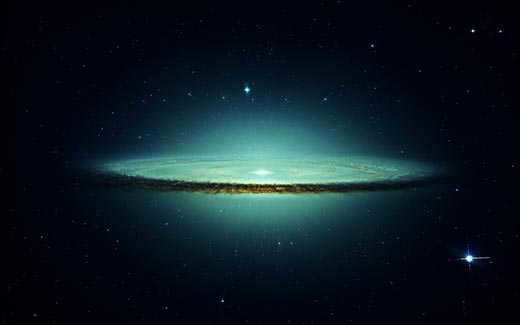
Despite Bradley’s fairly accurate calculation, it wasn’t until the 20th century that the exact speed could be determined. Modern laser technology was used for this purpose. The advanced equipment allowed for calculations with corrections for the refractive index of rays, resulting in a value of 299,792,458 kilometers per second.
These figures are still used by astronomers today. In addition, simple calculations in the future helped accurately establish the time it takes for rays to orbit the globe without being affected by gravitational fields.
Although the speed of light is not comparable to distances on Earth, it is used in calculations because people are accustomed to thinking in “Earth-like” terms.
What exactly is a light-year?
If we consider that a light second is equivalent to 299,792,458 meters, we can easily determine that light travels 17,987,547,480 meters in just one minute. This information is commonly used by astrophysicists to measure distances within planetary systems.
When it comes to studying celestial bodies on a universal scale, it is far more convenient to use the light-year as a fundamental unit of measurement. This unit is equivalent to 9.460 trillion kilometers or 0.306 parsecs. Interestingly, the observation of cosmic bodies is one of the few instances where humans can glimpse into the past.
It takes many years for the light emitted from a distant star to finally reach Earth. That is why, when observing cosmic objects, we see them not as they currently exist, but as they appeared at the precise moment the light was emitted.
Examples of distances measured in light years
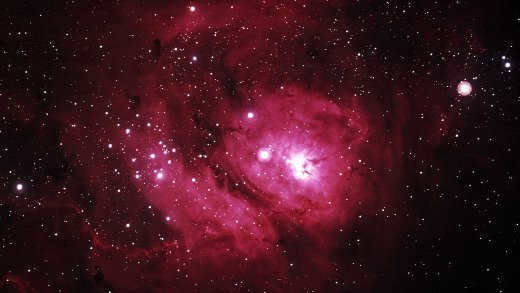
Here are some examples of distances measured in light-years:
Thanks to the ability to calculate the speed of light, astronomers have been able to determine the distance to various celestial bodies in terms of light-years. For instance, the distance from our planet to the Moon is approximately 1.3 light seconds. The distance to Proxima Centauri is about 4.2 light years, while the distance to the Andromeda Nebula is estimated to be around 2.5 million light years.
Furthermore, the distance between the Sun and the center of our galaxy is estimated to be about 26 thousand light years. As for the distance between the Sun and the planet Pluto, it is approximately 5 light hours.
How Many Earth Years are in a Light Year? How is Distance Measured in Kilometers? What is Greater Than a Light Year? Where is the Unit Light Year Used?
A light year is a unit of distance measurement that is not part of the standard system. It is defined as the distance that light can travel in a vacuum in the span of 365 Earth days. The vastness of the universe and the immense distances between objects make it impractical to use the familiar metric system. The scale of the universe far exceeds the measurements we typically use for Earth’s spaces, which are measured in meters.
How many Earth years does a light-year represent?
A light-year is the distance that light travels in one Earth year.

A light-year is a unit of measurement used to calculate distances between celestial bodies. It is not possible to measure it in terms of Earth years.
Similarly, the power of a nuclear explosion can be measured in terms of TNT equivalent, while its volume can be measured in liters.
An astronomical year consists of 365 days, whereas a light year represents the distance traveled by light in the span of 365 days.
To get a comprehensive understanding of the concept, we can provide a table that outlines the distance of a light year and its components.

*The measurement of a light month is estimated due to the varying duration of Earth months in the calendar.
Measurement of astronomical distances using light years
The light year is an extremely useful unit of measurement in the field of astronomy, and it is widely employed across various space-related disciplines.

The speed of light represents the maximum velocity at which information can travel, allowing us to measure the time it takes for one object to influence another by using light-years as a unit of distance.
It took exactly 8 minutes and 20 seconds for the sun’s rays currently reaching our planet to break away from the solar corona;
in the event of an explosion from the nearest star to us, Proxima Centauri, we would observe this event approximately 4.2 years later.
Additional examples can be found in Table #2, displaying the estimated distances between Earth and various celestial objects.
An “astronomical unit” is defined as 8.2 light-minutes and is approximately equal to 150 million kilometers.
Including Voyager 1 and Voyager 2.
Voyager 1 and Voyager 2 have journeyed for 19 and 17 sv hours, respectively. These spacecrafts have ventured beyond the boundaries of our solar system and are currently exploring the vast expanse of interstellar space.
Proxima, a star located in the Centauri constellation
Betelgeuse, a prominent star in the Orion constellation.
The center of the Milky Way Galaxy.
The diameter of our home galaxy is approximately 100,000 sv years, which is equivalent to 26,000 centimeters.
The Andromeda Nebula, another galaxy in our cosmic neighborhood.
The farthest edge of the observable Universe.
It would take approximately 45.7 billion years for the Sun’s rays to reach the edge of the observable Universe, which is about 4.57×10^10 sv years.
If we assume that a state-of-the-art spacecraft starts from Earth’s surface and eventually leaves the solar system, traveling at the third cosmic speed of 16.7 km/sec, then:
It would require 78 millennia for a vessel of this kind to reach Proxima Centauri.
To traverse the entire Milky Way galaxy, it would necessitate 1 billion, 780 million years.
For our space voyager, it would take 36 billion years to arrive at the Andromeda Nebula. Due to their immense distance, none of the current humans will be capable of exploring the recently discovered planetary systems that can support life. The closest such system is situated 40 light-years away, which implies that a spacecraft traveling at the speed of light would need 600,000 years to reach it!
When considering these vast time periods, it’s important to remember that the solar system formed just 4.57 billion years ago, our planet Earth 4.54 billion years ago, and the universe 16 billion years ago.
The vastness of the cosmos is evident when considering the enormous distance between the Earth and the Moon. Despite this, the scale of the universe makes it appear minuscule in comparison.
Space is renowned for its immensity, causing astronomers to utilize a different system of measurement than the one we are accustomed to. While kilometers can still be useful when determining the distance to the Moon (384,000 km), they become less practical when calculating the distance to Pluto, which is approximately 4,250,000,000 km. Consequently, astronomers employ alternative units of measurement for distance, which are outlined in more detail below.
Astronomical unit
The astronomical unit (a.u.) is the smallest unit of measurement in astronomy. In the past, it was defined as the radius of the Earth’s orbit around the Sun, which is the average distance from the Earth’s surface to the Sun. This was a convenient measurement for studying the solar system in the 17th century. The exact value of an astronomical unit is 149,597,870,700 meters. Nowadays, it is primarily used for calculating distances within the solar system or other planetary systems.
Light-year
The light-year is a unit of length used in astronomy that represents the distance light travels in a vacuum over the course of one terrestrial, Julian year. It is also used to describe the trajectory of light unaffected by gravitational forces. A light-year is approximately equivalent to 9,460,730,472,580 kilometers or 63,241 astronomical units (a.u.). While the light-year is primarily used in popular science literature to provide a general understanding of galactic distances, it is not commonly utilized in scientific research due to its lack of precision and practicality.
Resources related to the subject

Light year
Parsec
The most convenient and practical unit of distance measurement for astronomical calculations is the parsec. To understand its physical meaning, we need to examine the phenomenon known as parallax. Parallax occurs when an observer moves in relation to two distant objects, causing a change in their apparent distance. In the case of stars, this means that as the Earth orbits the Sun, the positions of nearby stars appear to shift slightly, while more distant stars remain in the same position. This shift in position, known as annual parallax, is measured in angular seconds.
The term “parsec” is derived from the words “parallax” and “second”. It refers to the distance to a star that has an annual parallax equal to one angular second, which is a unit of angle measurement in astronomy. In other words, one parsec is the distance to a star whose position appears to shift by one second of arc as Earth orbits the Sun. The exact value of a parsec is approximately 3.0856776 × 10^16 meters or 3.2616 light-years. Another way to think about it is that one parsec is roughly equal to 206,264.8 astronomical units (a.u.), which is the average distance between the Earth and the Sun.
Laser location and radar methods
These two cutting-edge techniques are employed to ascertain the precise distance to an entity within the solar system. The process is carried out as follows: by means of a potent radio transmitter, a focused radio signal is projected towards the target of scrutiny. In turn, the entity reflects the received signal and sends it back to Earth. The duration of the signal’s journey determines the distance to the object. The radiolocation method boasts an accuracy of only a few kilometers. In the case of laser location, a light beam is emitted instead of a radio signal, enabling the calculation of the object’s distance using similar computations. The accuracy of laser location is achieved down to the level of fractions of a centimeter.
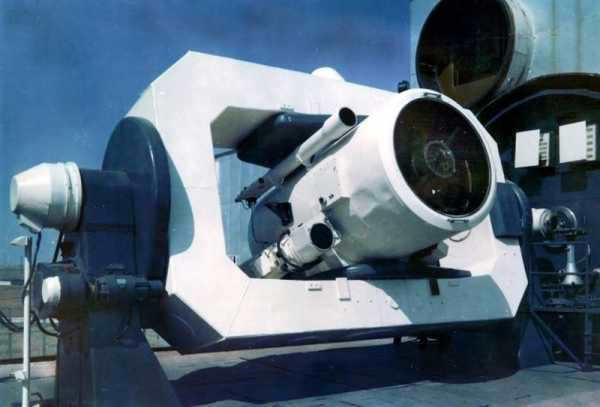
TG-1 telescope is located at the Sary-Shagan test site and is used as part of the LE-1 laser locator.
Using the trigonometric parallax method to measure distance
The trigonometric parallax method is a simple way to measure the distance to faraway celestial objects. It relies on basic geometry principles and involves the following steps. First, a baseline is drawn between two points on the Earth’s surface. Then, an object in the sky is chosen as the vertex of a triangle, with the baseline as one side. The angles between the baseline and lines drawn from the chosen points to the object are measured. By knowing the length of the baseline and these angles, it is possible to calculate the other elements of the triangle.
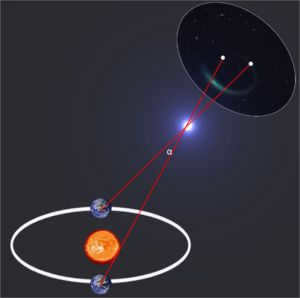
This method is not very practical for studying objects from Earth because the Earth’s atmosphere interferes with determining the annual parallax of objects located more than 100 parsecs away.
However, in 1989, the European Space Agency launched the Hipparcos space telescope, which enabled the determination of stars at distances of up to 1000 parsecs. As a result of the data obtained, scientists were able to create a three-dimensional map of the distribution of these stars around the Sun. In 2013, ESA launched the Gaia satellite, which has a measurement accuracy 100 times better, allowing for the observation of all stars in the Milky Way. If human eyes had the accuracy of the Gaia telescope, we would be able to see the diameter of a human hair from a distance of 2,000 km.
The method of using standard candles
The method of using standard candles is employed to determine the distances to stars in distant galaxies as well as the distances to those galaxies themselves. It is well-known that the brightness of a light source appears to decrease as the observer moves further away from it. In other words, the intensity of light emitted by a light bulb located 2 meters away will be four times weaker than if it were located only 1 meter away. This fundamental principle serves as the basis for measuring the distances to objects using the standard candle method. By drawing a comparison between a light bulb and a star, we can accurately assess the distances to light sources with known luminosities.


The sheer vastness of the Universe that has been uncovered through the utilization of existing methodologies is truly awe-inspiring. Take a look at the complete infographic for a comprehensive understanding.
Standard candles are objects in astronomy that have a known luminosity, which is similar to their source power. These objects can be any type of star. In order to determine the luminosity of a star, astronomers measure its surface temperature based on the frequency of its electromagnetic radiation. Once the temperature is known, it is possible to determine the star’s spectral class and find its luminosity using the Hertzsprung-Russell diagram. By knowing the luminosity and measuring the brightness (apparent magnitude) of the star, it is then possible to calculate the distance to it. This type of standard candle provides a general estimate of the distance to the galaxy in which it is located.
One-of-a-kind traditional candles
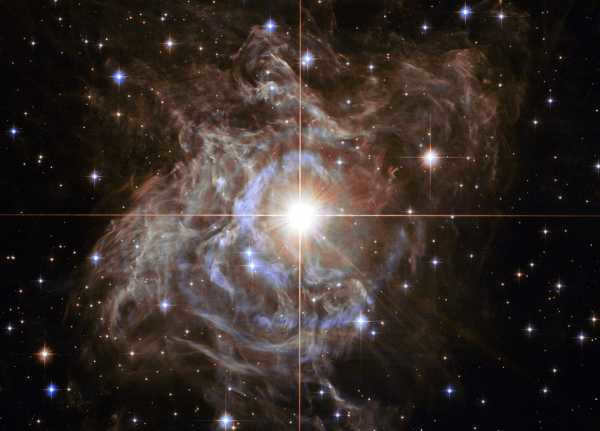
Cepheids, which are variable pulsating stars, are widely used as standard candles. Astronomers have discovered that in addition to their physical characteristics, Cepheids have a unique feature – their pulsation period, which can be easily measured and corresponds to a specific luminosity.
By observing these variable stars and measuring their brightness and pulsation period, scientists can determine their luminosity and calculate the distance to them. Identifying a Cepheid in another galaxy provides a relatively accurate and straightforward method of measuring the distance to that galaxy. This is why Cepheids are often referred to as the “beacons of the universe.”
While the cepheid technique is considered the most precise for distances up to 10,000,000 pc, its margin of error can reach up to 30%. In order to enhance accuracy, it would be necessary to utilize as many cepheids as possible within the same galaxy. However, even with this approach, the error rate still decreases to a minimum of 10%. This discrepancy in accuracy is primarily attributed to the imprecision of the period-luminosity relationship.
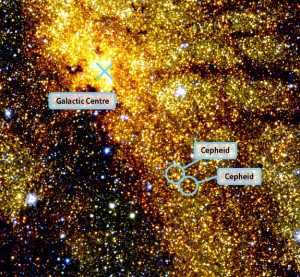

Aside from Cepheids, there are other types of variable stars that have established relationships between their period and luminosity, making them useful as standard candles. For measuring large distances, supernovae with known luminosity can also be used. Another method that is similar in accuracy to the Cepheid method involves using red giants as standard candles. Interestingly, the brightest red giants have a relatively narrow absolute stellar magnitude range, which allows for the calculation of their luminosity.
Distances within our solar system:
- 1 astronomical unit (a.u.) is the distance from the Earth to the Sun, which is equivalent to 500 seconds or 8.3 minutes.
- 30 astronomical units (a.u.) is the distance from the Sun to Neptune, which is equivalent to 4.15 light hours.
- 132 astronomical units (a.u.) is the distance from the Sun to the Voyager 1 spacecraft, which was observed on July 28, 2015. This object is the farthest man-made object.
Distances within the Milky Way and beyond:
- 1.3 parsecs (equivalent to 268,144 astronomical units or 4.24 light years) is the distance from the Sun to Proxima Centauri, the closest star to us.
- 8,000 parsecs (equivalent to 26,000 light years) is the distance from the Sun to the center of the Milky Way.
- 30,000 parsecs (equivalent to 97,000 light years) is the approximate diameter of the Milky Way.
- 770,000 parsecs (equivalent to 2.5 million light years) is the distance to the nearest large galaxy, the Andromeda Nebula.
- The edge of the observable Universe is estimated to be around 4 gigaparsecs, which is equivalent to 4,000,000,000,000,000 pc. This is the distance that light, recorded on Earth, has traveled. However, due to the expansion of the Universe, the objects that emitted this light are now approximately 14 gigaparsecs (or 45.6 billion light years) away.
The term Año Luz can be confusing for many people. It is often misunderstood as a measure of time, due to the word “year” being included in the phrase. However, it is actually a unit of measurement used in astronomy to calculate distance based on the speed of light. Instead of saying “take a light-year”, people use the expression “be light-years away”.
In this article, we will provide a detailed explanation of what a light year is, how it is measured, and provide examples to help clarify its meaning.
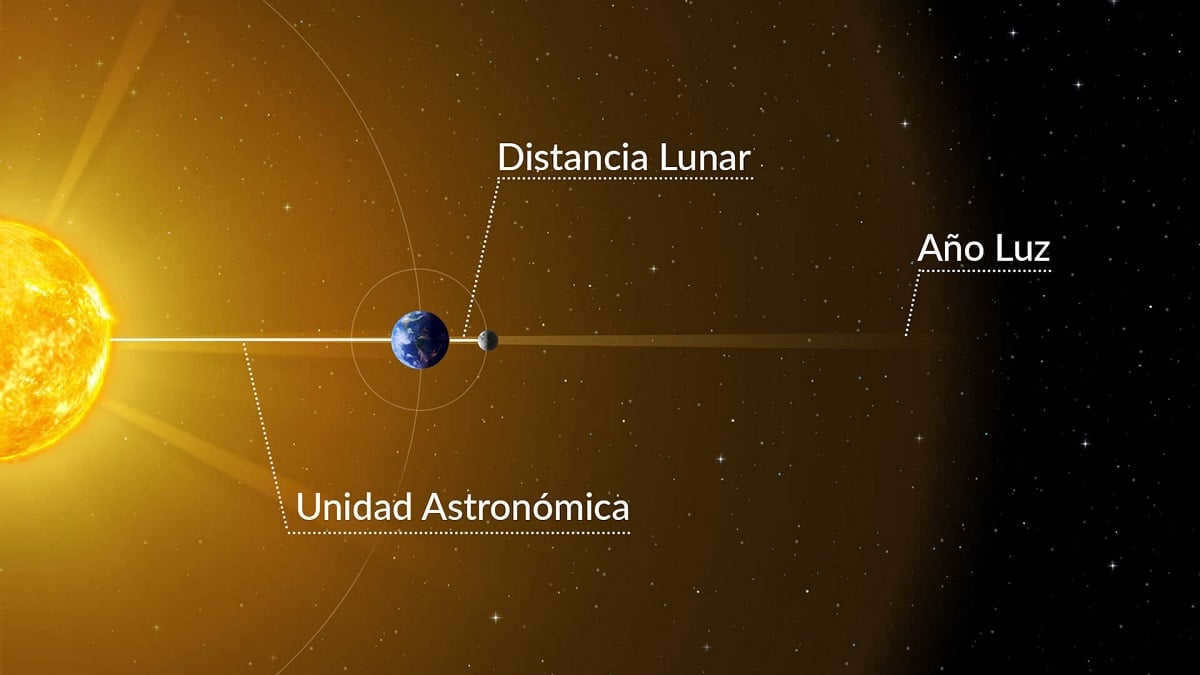
This idea functions as a standard of measurement in the field of astronomy, which defines the length that a photon or light particle can travel in a vacuum within the span of one year. In numerical terms, one light-year equates to 9.46 x 1012 km or 9,460,730,472,580.8 km. This tool was specifically created to gauge immense distances between stars that span billions of kilometers. Such vast distances necessitate a distinct unit of measurement to convey them in a comprehensible manner.
The International Astronomical Union provides a precise definition for a light year, which is abbreviated as ly or ly in the English language. In order to calculate it, we must take into account the Julian calendar (rather than the Gregorian calendar) and the speed of light (measured at 299,792,458 meters per second). Consequently, the duration of a year in which light travels a distance through space is 365.25 days, as opposed to the 365.2425 days in the Gregorian calendar.
Similar to other units of distance, this measurement can be expanded to larger multiples by adding a prefix to the numerical value. For instance, a distance of 1,000 light-years can be represented as a kilo-light-year, or kly, and a distance of 1,000,000,000 light-years can be expressed as a giga-light-year, or gly.
Origin of the idea
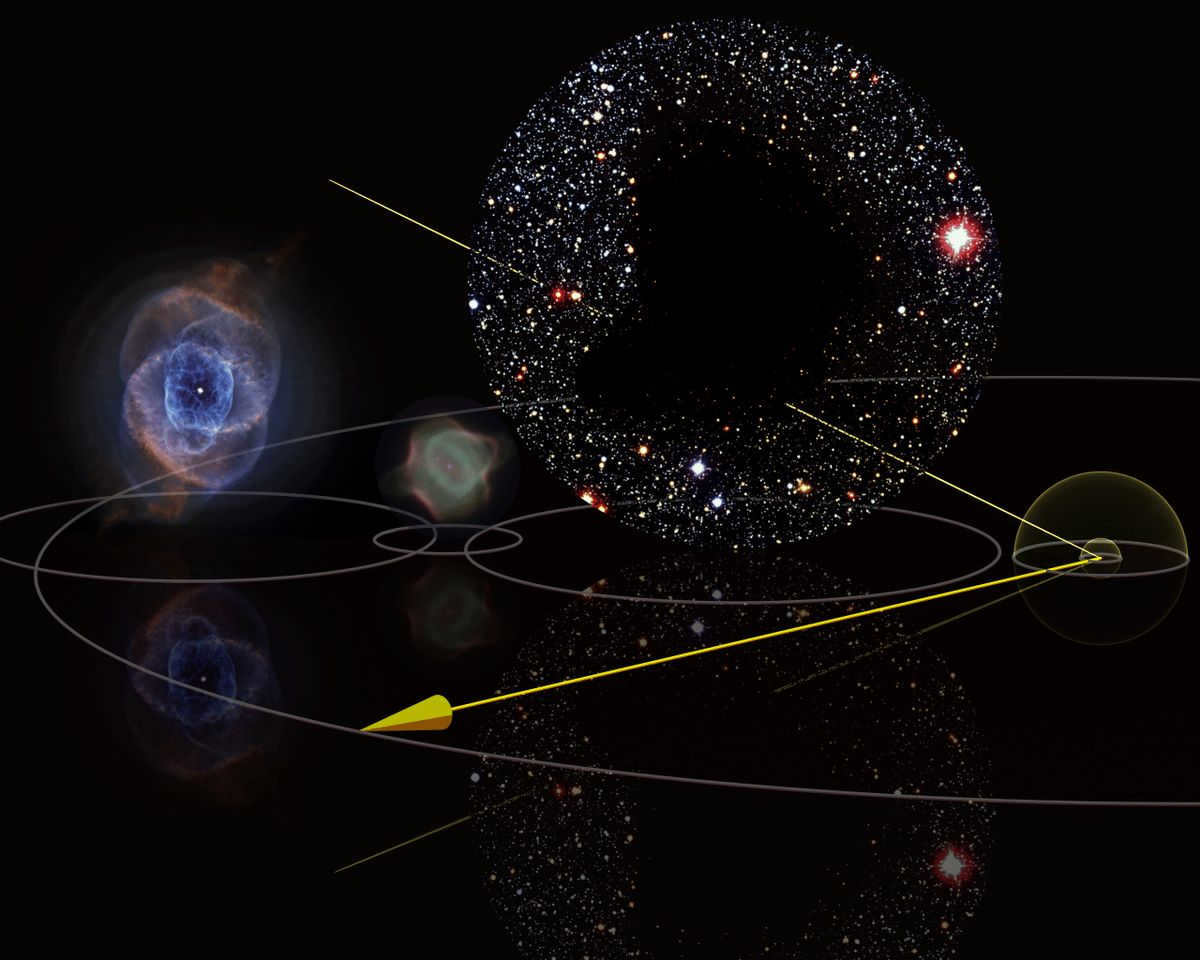
In the mid-61st century, Friedrich Bessel, a German astronomer and mathematician, introduced the concept of the light-year as a unit of measurement. Bessel's groundbreaking achievement was the precise calculation of the distance from Earth to a star other than the Sun, specifically the star 61 of Swan, situated in the constellation Swan. This distance amounted to an astonishing 98,734,594,662,350,985,287.1 kilometers or 61,350,985,287.1 miles, which were quite complex figures. To simplify matters, Bessel decided to express this distance in terms of the time it takes for light to travel it, which is approximately 10.3 years.
During the time when Bessel was conducting his work, the accurate determination of the speed of light had not yet been achieved. As a result, he chose to avoid incorporating the term “light-year” into his calculations. In 1851, a German popular science writer named Otto Uhle introduced the concept of the “light year” and proposed its usage in a manner similar to the “March hour.”
Originally, the German Academy regarded this unit of measurement as an astronomical standard. However, there were some individuals, such as the British astrophysicist Arthur Eddington, who opposed its adoption. They believed that it was cumbersome, impractical, and more suited for popular science purposes.

When considering distances in terms of light-years, certain spatial measurements take on particular significance. Let’s examine a few noteworthy instances of scientists utilizing this unit of measurement:
- Our own galaxy, the Milky Way, spans a diameter of approximately 150,000 to 240,000 light-years. In comparison, Andromeda, our neighboring galaxy, has a diameter of about 2,500,000 light-years. The separation between these two galaxies amounts to a distance of 2,500,000 light-years.
- Located in the Oort Cloud, which lies on the outer edge of our solar system, the distance between this cloud and the Sun is roughly 1 light-year.
- Proxima Centauri, the nearest star to our Sun, is situated 4.22 light-years away.
- The Big Dog dwarf galaxy, which is the nearest galaxy to the Milky Way, is situated at a distance of 25,000 light-years from it.
- A cluster of galaxies called the Local Group, which includes the Milky Way, is estimated to have a diameter of 10,000,000 light-years.
- The Virgo supergroup, encompassing the Local Group of galaxies, is believed to have a diameter of 200,000,000,000 light-years.
- The Pisces-Keith supergroup complex, which includes the Virgo supergroup, is estimated to have a diameter of 1,000,000,000,000 light-years.
- The Great Wall of Hercules-Corona Borealis, the largest observed astronomical structure in the Universe, is believed to have a diameter exceeding 10,000,000,000,000 light-years.
Alternative measurements in astronomy
In addition to the widely known astronomical unit, there exist other measurements used to express vast distances between celestial bodies and cosmic entities. Several of these measurements are based on the light year, such as the light month, light day, light hour, light minute, and light second. These measurements operate on the same principle and find application in popular science, telecommunications, and relativistic physics.
Astronomers often use units longer than one light year. One example is the parsec (pc), which is defined as the distance corresponding to the English parallax of one angular second. One parsec is equivalent to 3.2616 light years.
Astronomy students tend to prefer using the astronomical unit as a unit of measurement because it has a relatively fixed value that can be described in simpler terms. On the other hand, the meaning of the light-year depends on various factors, such as whether measurements are taken in a vacuum or if the Julian or Gregorian calendar is used.
The light-year is a less precise and more complex unit of measurement compared to others. However, it offers the advantage of visually representing the vast distances between celestial objects. This is because light, which is the fastest entity in the universe, is used as a reference point for measuring these distances.
By familiarizing yourself with this information, you can gain a deeper understanding of the concept of a light year and the methods used to measure it.
This article adheres to our editorial ethics guidelines. If you spot any errors, please click here to report them.
Summary of the Full Article: Network meteorology ” astronomy ” Light year

The summer solstice, which falls in June, marks the longest day of the year in the Northern Hemisphere. This astronomical event signals the start of the summer season. Across various cultures, this significant occurrence has been celebrated since ancient times. RBC Life delves into the intriguing history of one of the world’s oldest and most enigmatic holidays.
The summer solstice is a yearly celestial event that occurs when the Sun reaches its highest point in the sky. It is also the day when the Sun follows its longest path across the celestial sphere, resulting in the hemisphere receiving the most daylight in a year.
The timing of the summer solstice varies between the Northern and Southern Hemispheres. In the Northern Hemisphere, it falls in June, while in the Southern Hemisphere, it occurs in December. As the Northern Hemisphere experiences its longest day of the year, the Southern Hemisphere has its shortest day.
Astronomically, the summer solstice is considered the start of summer, which continues until the autumnal equinox (September 22 or 23 in the Northern Hemisphere, or March 20 or 21 in the Southern Hemisphere) [1].
What occurs during the summer solstice
The summer and winter solstices happen because of the inclination of the Earth’s rotational axis in relation to its orbit around the Sun. The inclination is approximately 23.4° [2]. For half of the year, the Northern Hemisphere is tilted towards the Sun, while the Southern Hemisphere is tilted away. If the axis of rotation was not tilted, all locations on the Sunlit half would receive equal amounts of light and warmth.
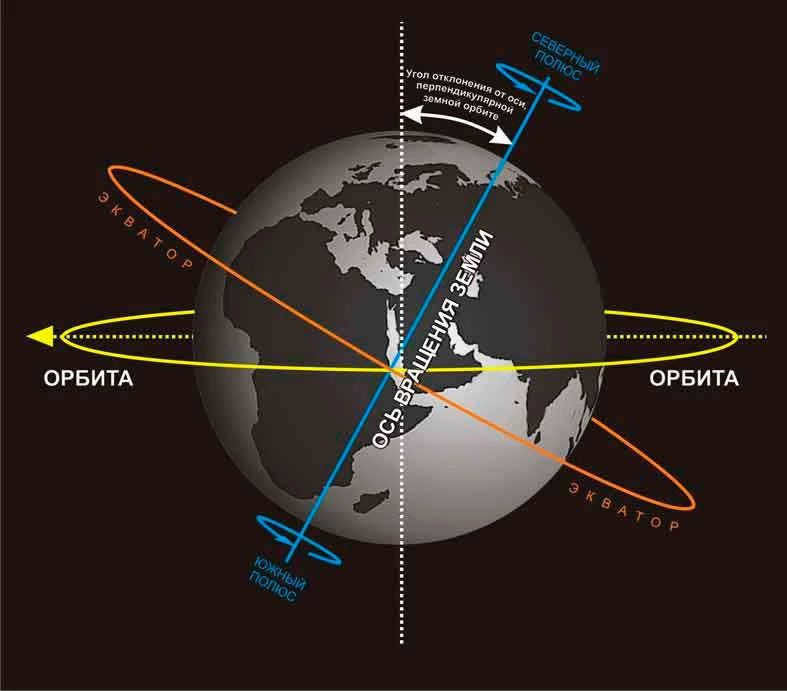

The picture shows the inclination of the axis of rotation with respect to the orbit and equator.
During the June solstice, the Sun is directly above the Tropic of Cancer (the Northern Tropic), which is one of the five major parallels of the planets [3]. This day marks the summer solstice in the Northern Hemisphere and the winter solstice in the Southern Hemisphere. During the December solstice, the Sun is positioned above the Tropic of Capricorn (Southern Tropic). On this day, it is the summer solstice in the Southern Hemisphere and the winter solstice in the Northern Hemisphere.
During the summer solstice in the Northern Hemisphere, the duration of daylight varies depending on the latitude. At the equator, there is approximately 12 hours of daylight from sunrise to sunset. In temperate or mid-northern latitudes, the length of daylight extends to about 15 hours. However, north of the Arctic Circle at 66.5 degrees latitude, the Sun never sets and remains above the horizon for a full 24 hours.
During the 21st century, the summer solstice can take place on any of the dates June 20, 21, or 22. From an astronomical perspective, the solstice happens simultaneously all around the world. The precise moment occurs when the Sun is directly above the Tropic of Cancer.
In 2023, the summer solstice will happen in the Northern Hemisphere on June 21 (Wednesday) at 14:57 UTC (Coordinated Universal Time), which is equivalent to 17:57 Moscow time [4].
In 2023, the Southern Hemisphere will experience the summer solstice on December 22. On that same day, the Northern Hemisphere will have the winter solstice, marking the shortest day of the year.
Communal Gathering to Honor the Summer Solstice
The Summer Solstice Celebration is a festive event that takes place in various societies. It commemorates the longest day of the year and has been a tradition for countless generations. Throughout history, individuals have marveled at the Sun’s position in the heavens. Some scholars theorize that renowned landmarks like Stonehenge in the United Kingdom, the Karnak Temple in Egypt, and Chankillo in Peru were constructed with the intention of observing this astronomical occurrence [1].


At Stonehenge, the Sun emerges from behind the ancient entrance to the stone circle, casting its rays directly into the heart of the monument. Scholars hypothesize that the summer solstice celebration has been observed at this site for countless centuries.
In ancient Greece, as per certain calendars, the summer solstice signaled the commencement of the New Year and the month leading up to the initiation of the Olympic Games. Concurrently, a festival dedicated to Kronos (initially revered as the god of agriculture, later associated with time) took place [5].
Across numerous societies, it was customary on the summer solstice to construct bonfires and leap over them, arrange processions and merriments adorned with floral garlands and branches, and dance around a bedecked tall pole, commonly referred to as the May tree.
Some ancient customs have managed to endure until the present time. For instance, in accordance with the contemporary “Wheel of the Year” calendar, which is rooted in the traditional pre-Christian festivities of the Celtic and Germanic communities, the midsummer celebration, also known as Lita [6], takes place from June 19 to June 23.


In 2019, the film “Solstice” was released. It tells the story of a group of friends who travel to a small village in Sweden to celebrate the summer solstice. However, their joyous occasion takes a dark turn when they become entangled with a mysterious pagan cult.
The summer solstice has long been an important event in Russia, known as Ivan Kupala. According to ethnographer Apollo Korinfsky’s book “Folk Russia” (1901), Ivan’s Day, or Ivan Kupala, was traditionally celebrated on both June 23 and 24. In modern times, it is now observed on July 7 (New Style).





